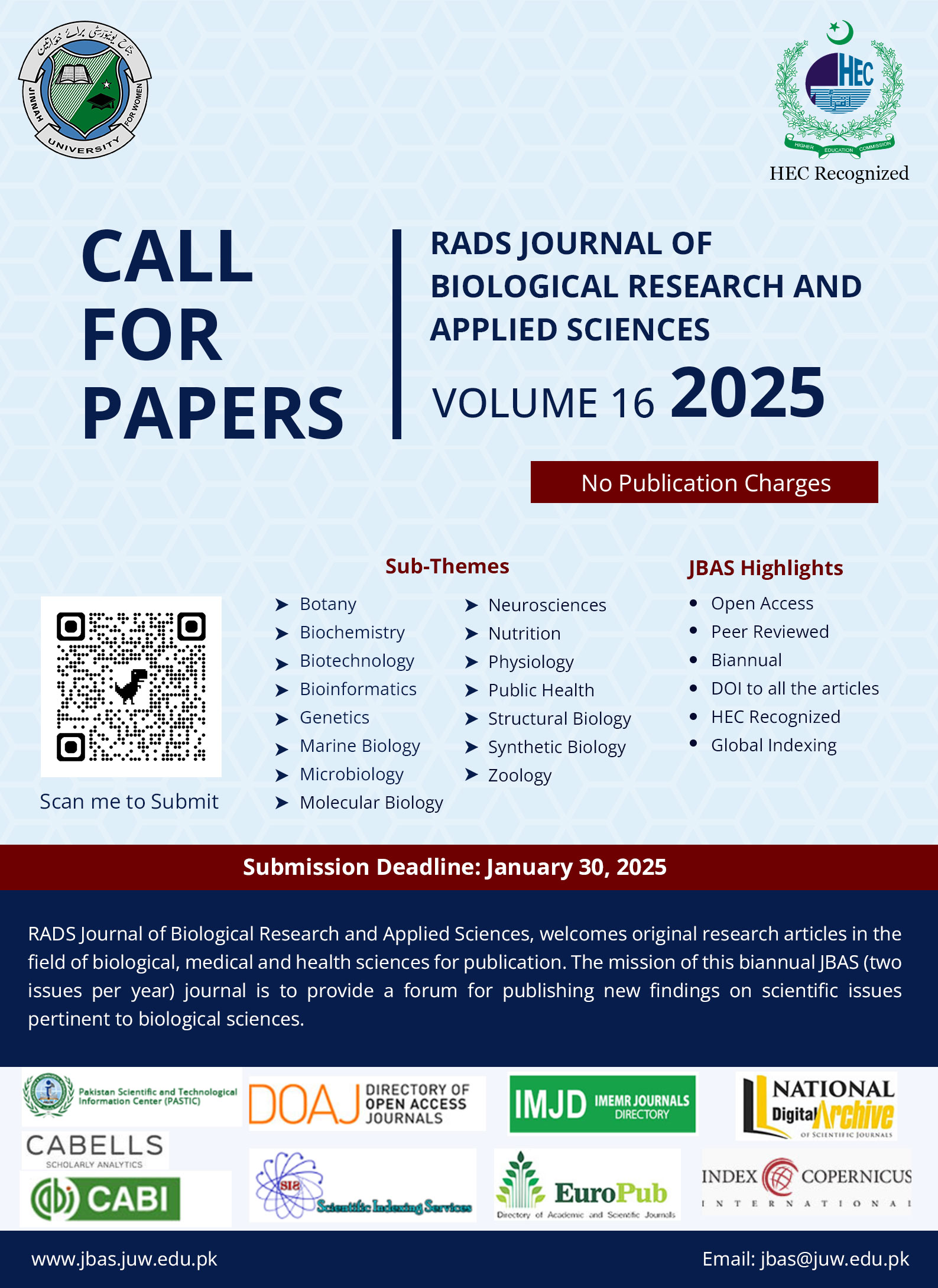Assessment of Basic Nutritional Profile and Antioxidant Potential of Pakistani Pomegranate (Punica Granatum L.) Varieties
DOI:
https://doi.org/10.37962/jbas.v13i2.519Keywords:
pomegranate, fatty acids, antioxidant potential, seed oil, waste utilizationAbstract
Background: Pomegranate seeds are the remains of industrial processing of pomegranate fruit into various products such as juice, jam, and jelly that cause environmental pollution and a loss of lipid and water-soluble bioactive compounds. The seeds comprise 15-25% of the whole fruit weight. Its lipid fraction has a distinct fatty acid profile with high polyunsaturated fatty acid contents such as punicic acid (PA) (50-80%), tocopherols, and phenolic compounds.
Objective: The objective of the current study was to characterize the three main Pakistani pomegranate varieties (Desi, Kandhari, and Bedana), supporting waste exploitation strategies. The physicochemical characteristics, fatty acid profile, antioxidant potential of all three varieties were studied.
Methodology: The extracted oils samples were investigated for their lipid contents, fatty acid composition, physicochemical properties, and antioxidant potential on the varietal base.
Results: Total lipid contents ranged from 8.70-15.9% dry matter with conjugated linolenic acid (68.5-76.7% of total fatty acids) as the predominant fatty acid in all samples, followed by linoleic, oleic acid, stearic acid, and palmitic acid. Further characterization revealed that Desi was superior regarding acidity and oxidation stability over the other two varieties associated with higher total phenolic and tocopherol contents with potent antioxidant activities.
Conclusion: The present results demonstrate a preferable fatty acid pattern in pomegranate seed oil (PSO), which may be potential functional ingredient for product development in food and non-food applications in combination with high antioxidant contents.
Downloads
Published
Issue
Section
License
Copyright (c) 2023 RADS Journal of Biological Research & Applied Sciences

This work is licensed under a Creative Commons Attribution-NonCommercial 4.0 International License.

This is an Open Access article distributed under the terms of the Creative Commons Attribution License (http://creativecommons.org/licenses/by/4.0), which permits unrestricted use, distribution, and reproduction in any medium, provided the original work is properly cited.

















